
Fat Tire Cycles Inc: The Electric Bike Revolution
The Rise of Fat Tire Cycles: Why Riders Are Going Bigger
Picture a bike gliding easily over a sandy beach, a snow-covered trail, or a rough path with roots and rocks. Standard bikes would stop dead on this terrain. This is the world that fat tire cycles open up, and it's the main reason for their huge growth in popularity.
The rise of fat tire cycles isn't just a passing trend; it's a direct response to riders wanting an amazing mix of stability, all-terrain ability, and pure comfort. This movement has been boosted by adding powerful and efficient electric motors. These incredible machines are now accessible to more people than ever before.
A fat tire cycle is basically a bike built around huge tires. But the electric version has changed it from a niche toy into a revolutionary way to travel and explore. In this article, we'll look at the key reasons behind their popularity, see how electric power changed the game, check out the real pros and cons, and help you understand if a fat tire cycle is right for your next adventure.
What Exactly Defines a Fat Tire Cycle? From Niche to Mainstream
To understand the appeal, we first need to define what makes a fat tire bike unique. It's more than just its looks. Its design is a masterclass in form following function, built specifically for capability where other bikes fail.
The Telltale Sign: Those Big, Beefy Tires
The most defining feature is, of course, the tires. A true fat tire is typically 4.0 to 5.0 inches wide. For perspective, this is much wider than a standard mountain bike tire, which usually measures between 2.0 and 2.5 inches. It's also vastly larger than a road bike tire at less than 1.2 inches.
This massive width allows riders to run extremely low tire pressures—often between 5 and 15 pounds per square inch (PSI). This creates a wide, bendable contact patch with the ground. Instead of cutting into soft surfaces like sand or snow, the tire "floats" on top. This same principle provides incredible grip and traction on loose gravel, mud, and uneven trails.
A Brief History: From Alaskan Snow to Global Phenomenon
The concept of the fat bike wasn't born in a corporate boardroom. It was forged in the harsh landscapes of Alaska and the sandy deserts of New Mexico in the late 20th century. Riders needed a way to cross terrain that was previously unrideable. This spirit of innovation, inherited from the pioneers of off-road cycling, led to the creation of these specialized machines.
For years, they remained a niche category for die-hard adventurers. However, the game changed with the advent of the fat tire electric bike. The addition of a motor solved the primary drawback—effort—and launched the fat tire cycle from a curious niche into the global mainstream.
| Bike Type | Typical Tire Width | Typical Tire Pressure (PSI) |
|---|---|---|
| Fat Tire Bike | 4.0"+ | 5-15 |
| Mountain Bike | 2.0" - 2.6" | 22-35 |
| Road Bike | 0.9" - 1.2" | 80-120 |
The Core Appeal: 5 Reasons Riders Are Embracing Fat Tires
So, why are so many riders choosing to go fat? From seasoned cyclists to complete beginners, the appeal lies in a unique blend of benefits. These benefits directly address common fears and limitations associated with traditional cycling.
1. Unshakeable Stability and Confidence
The wide, cushioned tires create an incredibly stable platform. For new riders, or those who haven't been on a bike in years, this is a game-changer. The fear of losing balance on uneven pavement or a gravel path is virtually gone. The bike feels planted, secure, and confidence-inspiring, encouraging more people to get out and ride without anxiety. This stability makes them extremely forgiving of small rider errors or unexpected obstacles.
2. True All-Terrain Freedom
This is where fat tire cycles truly shine. They give you the power to ride on surfaces that are off-limits to other bikes. We're not just talking about light gravel paths; we mean deep sand, fresh snow, thick mud, and loose, rocky trails.
From our experience, the feeling of floating over soft sand at the beach, rather than instantly digging in and stopping, is amazing. On a muddy, root-covered forest trail, the huge grip provides a feeling of security and control that allows you to conquer sections you would have previously walked. It unlocks a four-season, all-weather riding capability.
3. A Smoother, More Comfortable Ride
Think of the huge tires as natural shock absorbers. The large volume of air inside them, run at low pressure, soaks up an incredible amount of vibration and impact from the ground. Potholes, cracks in the pavement, tree roots, and small rocks are cushioned by the tire itself, often removing the need for complex and heavy suspension systems.
This results in a remarkably smooth and comfortable ride, reducing tiredness in your hands, back, and shoulders on long journeys.
4. Increased Accessibility for All Fitness Levels
The combination of stability and comfort makes cycling more approachable for a diverse range of people, regardless of age, fitness level, or physical ability. It removes many of the traditional barriers to entry. When paired with an electric motor, this accessibility is magnified.
Even with assistance, riding is fantastic low-impact exercise. In fact, research shows e-bikes provide moderate-to-vigorous physical activity, making it easier for people to achieve their fitness goals in a way that is fun and sustainable.
5. The "Go Anywhere, Do Anything" Mentality
All these points come together to create one powerful feeling: freedom. A fat tire cycle isn't just equipment for getting from Point A to Point B; it's a vehicle for exploration and adventure. It encourages spontaneity.
See a trail you've never explored? Ride it. Want to take a shortcut across a park or down to the beach? You can. It removes the "what if" from your ride planning and replaces it with a can-do attitude.
The Electric Revolution: How Motors Transformed Fat Biking
While traditional fat bikes offered incredible capability, they had one big drawback: they were heavy and required a lot of effort to pedal, especially uphill or on flat pavement. The addition of electric motors didn't just enhance the fat bike; it perfected it, creating a combination that unlocked its full potential for everyone.
Overcoming the "Weight Penalty"
The wide rims, massive tires, and strong frames that give fat bikes their strength also add significant weight. On a non-electric model, speeding up from a stop or climbing a long hill can be a serious workout. An electric motor completely removes this downside.
The pedal-assist or throttle provides the necessary power to get the bike moving with ease, turning what was once a chore into an easy glide. The motor doesn't just help with the bike's weight; it makes you feel superhuman, flattening hills and fighting headwinds for you.
Understanding E-Bike Assist: Pedal-Assist vs. Throttle
Electric bikes primarily offer assistance in two ways, which are often defined by a class system in the US:
-
Pedal-Assist System (PAS): The motor engages only when you are actively pedaling. You can typically select different levels of assistance, from a gentle push to a powerful boost. This feels like having a constant tailwind.
-
Throttle: This feature allows you to engage the motor with a simple twist or push of a lever, similar to a scooter or motorcycle. You don't have to be pedaling for the throttle to work.
These systems are categorized into classes:
- Class 1: Pedal-assist only, with a maximum assisted speed of 20 mph.
- Class 2: Includes a throttle and can assist up to 20 mph.
- Class 3: Pedal-assist only, with a higher maximum assisted speed of 28 mph.
More Power, More Range, More Adventure
The electric motor does more than just make pedaling easier; it basically expands the scope of your adventures. Hills that were once scary are now easily conquered. Rides that might have been limited to an hour can now last all day.
As top cycling publications often highlight, modern lithium-ion batteries can offer reliable ranges of 30 to 60 miles or more on a single charge, depending on the terrain, assistance level, and rider input. This means you can venture further, explore more, and get home without worrying about running out of energy.
Beyond the Hype: A Realistic Look at the Trade-offs
No bike is perfect for every single situation, and at Fat Tire Cycles Inc., we believe in providing an honest, balanced perspective. Building trust means acknowledging the downsides and helping you make a truly informed decision. Fat tire electric bikes are incredible, but they do come with a few trade-offs.
The Pros and Cons of Fat Tire Electric Bikes
For clarity, we've broken down the key advantages and disadvantages into a simple table.
| Pros | Cons |
|---|---|
| Supreme Stability & Grip | Heavier & Harder to Transport |
| All-Terrain Capability (Sand, Snow) | Can Be Sluggish on Pavement Without Assist |
| Exceptional Comfort (Tire Cushioning) | More Expensive Than Standard Bikes |
| Confidence-Inspiring for All Riders | Wider Frame Can Be Cumbersome to Store |
| Electric Assist Negates Effort | Tires & Tubes are More Specialized/Costly |
Is a Fat Tire Cycle Right for You?
The key is to match the bike's strengths to your intended use. The "Cons" listed above are real-world considerations. A 60-75 lb bike can be a challenge to lift onto a car rack or carry up a flight of stairs.
The wide tires that are so brilliant off-road create more rolling resistance on smooth pavement, which can make the bike feel slow if the motor is off. Ultimately, the decision comes down to your priorities. As consumer guides advise, you should evaluate your primary needs.
If your goal is maximum comfort, all-terrain adventure, and confidence-inspiring stability for trails, beaches, or rough country roads, the pros overwhelmingly outweigh the cons. If you ride exclusively on smooth city pavement, live in a small apartment with limited storage, and prioritize low weight above all else, another type of electric bike might be a better fit.
Frequently Asked Questions
Q: How much do fat tire electric bikes typically cost?
A: Fat tire electric bikes generally range from $1,200 to $4,000, depending on the motor power, battery capacity, and component quality. While they cost more than standard bikes, the all-terrain capability and electric assistance provide excellent value for most riders.
Q: How far can I ride on a single battery charge?
A: Most fat tire electric bikes can travel 30-60 miles on a single charge, depending on factors like terrain, rider weight, assistance level, and weather conditions. Riding on sand or snow may reduce range compared to pavement riding.
Q: Are fat tire bikes hard to pedal without electric assistance?
A: Yes, fat tire bikes are heavier and have more rolling resistance than standard bikes, making them more challenging to pedal without motor assistance. However, the electric motor easily overcomes this limitation, making pedaling feel effortless.
Q: Can I ride a fat tire electric bike in winter and snow?
A: Absolutely! Fat tire electric bikes excel in snow conditions. The wide tires provide excellent flotation and traction in snow, while the electric motor helps maintain momentum through challenging winter terrain.
Q: Do I need special maintenance for fat tire electric bikes?
A: Fat tire electric bikes require similar maintenance to regular electric bikes, plus some specific care for the larger tires. You'll need to check tire pressure regularly (keeping it low for optimal performance) and may need to replace tires and tubes less frequently due to their durability, but replacements can be more expensive.
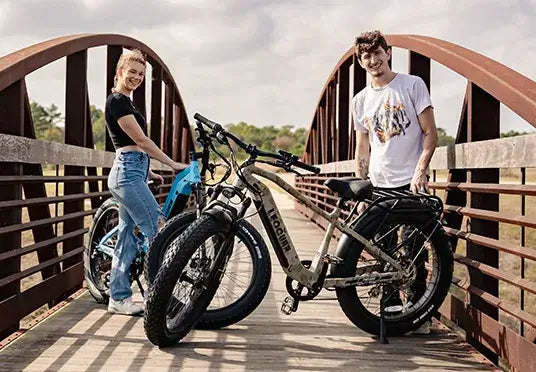
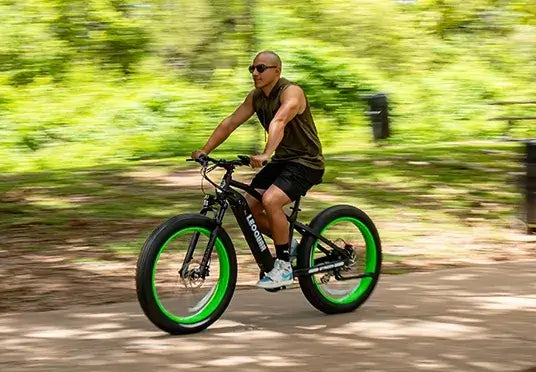


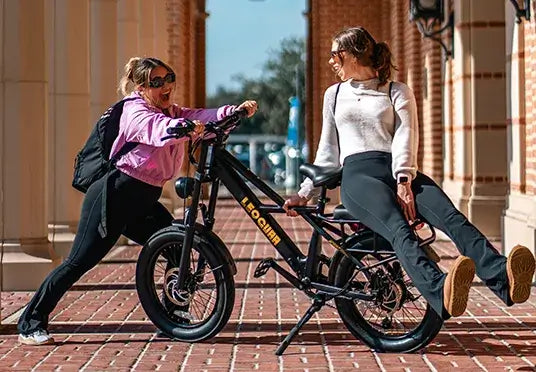
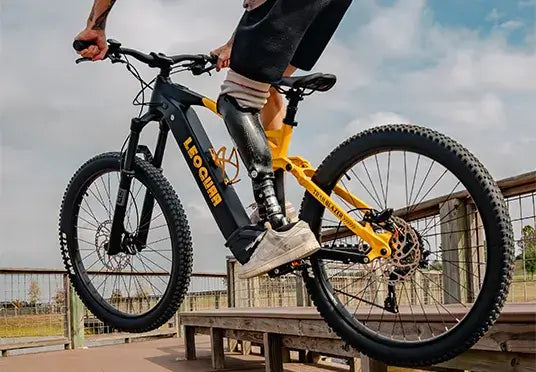































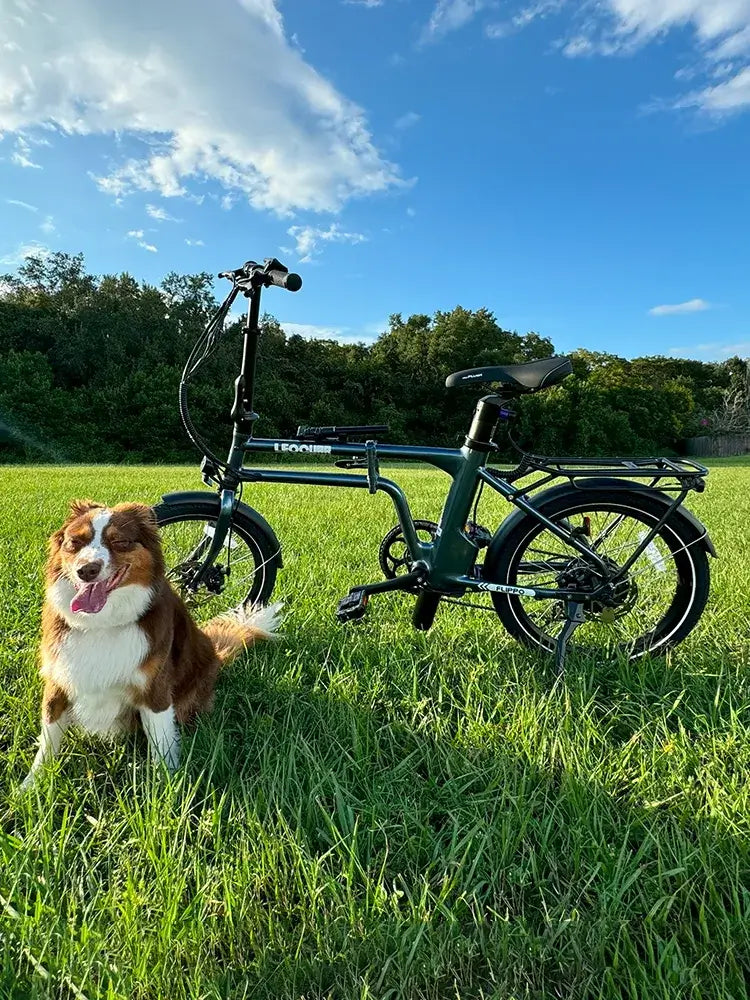










Leave a comment
Please note, comments must be approved before they are published.
This site is protected by hCaptcha and the hCaptcha Privacy Policy and Terms of Service apply.